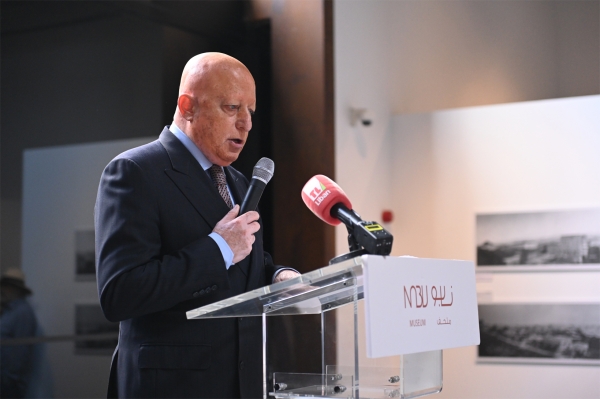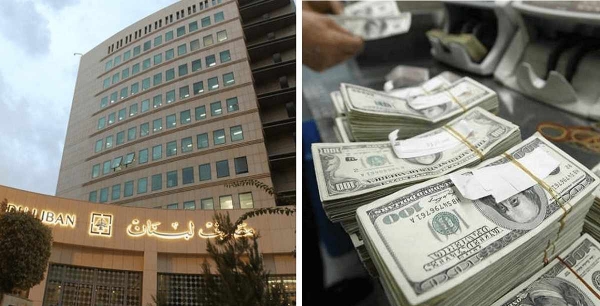JAD-Jeunesse Anti-Drogue
JAD’s main focus revolves around four topics: drugs, alcohol, smoking and AIDS. Child internet addiction and the risk of unexploded mines and ordinances have been recently added to the organization’s concerns.
Addiction trends
President Hawat has been tracking the progress of addiction in Lebanon for a long time and says that the problem was never as serious as it is today. “When I first began my work with JAD 33 years ago, only seven or eight addicts would turn to our facilities every year. Since then, the number has been growing steadily, reaching as high as nearly 450 addicts last year. Numbers are growing at alarming rates while the age of onset of addiction is decreasing. People are starting to use heroin as young as at 15. Another striking observation is the expanding spectrum of female addiction and trafficking. This is unusual in our Middle-Eastern societies and is a sign of a stark decline in conservative values and attitudes.”

Family disintegration is the leading cause of lapse into addiction in 80% of the reported cases. What complicates the problem even more is the fact that addicts are now abusing several substances at once. Frequently, when the person is addicted to only one substance, the percentage of recovery, after a year and a half of treatment and follow-up, is as low as 8%. With an addiction to a multitude of psychoactive substances, the likelihood of recovery drops to even lower levels.

شاهد الصورة كاملة
Family disintegration is the leading cause of lapse into addiction in 80% of the reported cases. What complicates the problem even more is the fact that addicts are now abusing several substances at once. Frequently, when the person is addicted to only one substance, the percentage of recovery, after a year and a half of treatment and follow-up, is as low as 8%. With an addiction to a multitude of psychoactive substances, the likelihood of recovery drops to even lower levels.
Referral to JAD
Addicts are usually referred to JAD by the courts. Some of them turn up at the centers accompanied by their parents but very few come of their own accord. Addicts undergo 32 tests when they first arrive.
 They are then admitted to Dahr El-Bashek hospital for detoxification, after which they return to JAD’s facilities to attend the rehabilitation program. JAD has launched an inpatient center in Jordan to treat Lebanese youth in collaboration with the Jordanian General Security. The Jordanian government bore the expense of treating 700 to 750 Lebanese youths. Delegates from JAD had to travel twice a week to check on the addicts, but the organization could not afford these periodic travel expenses and thus the facility had to be closed down. Another inpatient facility was set up in Zahle but the cost of services was an inhibiting factor and the center was also doomed to closure.
They are then admitted to Dahr El-Bashek hospital for detoxification, after which they return to JAD’s facilities to attend the rehabilitation program. JAD has launched an inpatient center in Jordan to treat Lebanese youth in collaboration with the Jordanian General Security. The Jordanian government bore the expense of treating 700 to 750 Lebanese youths. Delegates from JAD had to travel twice a week to check on the addicts, but the organization could not afford these periodic travel expenses and thus the facility had to be closed down. Another inpatient facility was set up in Zahle but the cost of services was an inhibiting factor and the center was also doomed to closure.
JAD’s President, Joseph Hawat, reports that the organization is now channeling much of its focus and resources towards awareness and training rather than rehabilitation because spreading prevention among youths is far more effective than treatment.
Structure and activities
JAD operates across Lebanon. It has roughly 33 offices and centers. The organization is not involved in politics and welcomes people from different sectarian backgrounds. Its staff works on a strictly volunteer basis. In addition to its rehabilitation services, the organization cooperates with the public and private associations, committees, universities, institutions and schools in offering consultation services and expertise. It conducts lectures and seminars, organizes training and awareness sessions and distributes thousands of pamphlets to educate about the dangers of addiction and enlighten people against the evil of drugs, AIDS, alcoholism and nicotine.
The organization was licensed by the Ministry of Youth and Sports to launch nine sports teams raising the banner “Sports Against Drugs”. Hawat explains that sport is beginning to win the war against drugs, noting that ‘moving addicts from the realm of death to the realm of sport’ was one of the accomplishments he was most proud of.
Cultural center
After nearly 30 years of preparations, JAD finally launched on May 10 its specialized center for training and awareness of the risks of psychotropic substances. The center is divided into sections including an exposition hall featuring films and cartoons that target children (6 to 10 year olds) and a massive library containing all the publications issued from 1983 to 2013 on alcohol, tobacco, AIDS, drugs and internet addiction. Section B accommodates a gallery and a museum where roughly 200 paintings and 3000 pieces are displayed to express awareness of the scourges of drugs in addition to thirty photos of celebrities before and after drug abuse. Another hall is designed to accommodate parents, police and social workers. This section is dedicated for special training materials and a drug testing laboratory. A division is dedicated for follow-up and for the reintegration of addicts into community service and another sells gadgets and pieces aimed to support the association’s activities.
“Despite the efforts we and other NGOs are making, our work is doomed to failure if the stakeholders do not step in and play their part in fighting addiction. The battle of addiction is not our battle alone. Ministries, parents, religious authorities and media platforms should all be active players in addressing this uphill struggle. If we fail to make a concerted effort and to find rapid and efficient solutions to the ever-expanding addiction trends, our generations are sure to face an unfortunate and horrifying reality over the next ten years,” is how President Hawat summarizes the scene of addiction in Lebanon.

شاهد الصورة كاملة
JAD’s President, Joseph Hawat, reports that the organization is now channeling much of its focus and resources towards awareness and training rather than rehabilitation because spreading prevention among youths is far more effective than treatment.
Structure and activities
JAD operates across Lebanon. It has roughly 33 offices and centers. The organization is not involved in politics and welcomes people from different sectarian backgrounds. Its staff works on a strictly volunteer basis. In addition to its rehabilitation services, the organization cooperates with the public and private associations, committees, universities, institutions and schools in offering consultation services and expertise. It conducts lectures and seminars, organizes training and awareness sessions and distributes thousands of pamphlets to educate about the dangers of addiction and enlighten people against the evil of drugs, AIDS, alcoholism and nicotine.
The organization was licensed by the Ministry of Youth and Sports to launch nine sports teams raising the banner “Sports Against Drugs”. Hawat explains that sport is beginning to win the war against drugs, noting that ‘moving addicts from the realm of death to the realm of sport’ was one of the accomplishments he was most proud of.
Cultural center
After nearly 30 years of preparations, JAD finally launched on May 10 its specialized center for training and awareness of the risks of psychotropic substances. The center is divided into sections including an exposition hall featuring films and cartoons that target children (6 to 10 year olds) and a massive library containing all the publications issued from 1983 to 2013 on alcohol, tobacco, AIDS, drugs and internet addiction. Section B accommodates a gallery and a museum where roughly 200 paintings and 3000 pieces are displayed to express awareness of the scourges of drugs in addition to thirty photos of celebrities before and after drug abuse. Another hall is designed to accommodate parents, police and social workers. This section is dedicated for special training materials and a drug testing laboratory. A division is dedicated for follow-up and for the reintegration of addicts into community service and another sells gadgets and pieces aimed to support the association’s activities.
“Despite the efforts we and other NGOs are making, our work is doomed to failure if the stakeholders do not step in and play their part in fighting addiction. The battle of addiction is not our battle alone. Ministries, parents, religious authorities and media platforms should all be active players in addressing this uphill struggle. If we fail to make a concerted effort and to find rapid and efficient solutions to the ever-expanding addiction trends, our generations are sure to face an unfortunate and horrifying reality over the next ten years,” is how President Hawat summarizes the scene of addiction in Lebanon.








Leave A Comment